Aspire Attendance Tracker
Schools can track, analyse and compare their attendance data against 1,000s of other FFT schools using Aspire Attendance Tracker.
Log in to Aspire to access Attendance Tracker – log in here.
Not an FFT Aspire user? Learn more here.
The quality of data we have about alternative provision in England is poor.
The government publishes the number of pupils attending AP schools [1]. In January 2021, this stood at 12,785.
But this only includes pupils with a ‘current’ or ‘main’ registration. It does not include pupils with subsidiary (or other) registrations who have a ‘main’ school somewhere else. Nor does it capture the transitory nature of most enrolments in AP. We see the sector tend to “fill up” during the course of an academic year.
We also have no real idea how many pupils are in alternative provision in the independent sector. DfE data reports that local authorities were commissioning over 32,000 alternative provision places in January 2021. The majority of these places are for young people with EHC plans attending independent schools (including independent special schools). As there is no official designation of independent AP schools we tried to distinguish from independent schools a while back.
Finally, we have no idea of the extent to which mainstream schools are placing (and paying for) alternative provision, nor how many have their own internal AP units.
In this blogpost, we try to come at the question of how much use mainstream schools are making of alternative provision via a different route: attendance registers.
Educated off-site
Schools record pupils in off-site educational activity at another educational establishment using code B in attendance registers. This does not include those who are dual registered, undertaking work experience, attending interviews, going on visits on trips, or engaging in sporting activities.
Pupils with code B are counted as present for the purposes of attendance reporting unless the off-site provider notifies the school that a pupil was absent.
Using data collected from nearly 8,000 schools, we calculate the number of pupils who spent at least one session in an off-site educational activity in the first full week of October in both 2020 and 2021 [2]. We express this figure as a rate per 1,000 pupils on roll in the chart below.
The bar for Year 6 looks anomalous. We contacted some schools where there were high rates of pupils being educated off-site. These turned out to be situations where pupils were visiting secondary schools for a variety of reasons, usually to do with transition.
Grossing up the rates to the full population of pupils in state-funded schools would suggest that there were 37,000 pupils in off-site educational activity in the week ending 8th October 2021.
Dual Registration
Code D is used in attendance registers for pupils who are dual registered at AP schools, hospital schools and special schools. Code D is not included in attendance statistics. Instead, the other school where a pupil is dual registered records their attendance (or absence).
As the chart below shows, the incidence of dual registration is somewhat lower than the incidence of education off-site. However, pupils in Year 11 are the most likely to be dual registered or educated off-site.
Extrapolating these figures to the full national population suggests that there were around 13,000 dual registered pupils in the week ending 8th October 2021.
Absent due to exclusion
Finally, let’s take a look at attendance code E. This is for pupils who are absent due to exclusion. Alternative provision must be arranged after six consecutive days of exclusion. Therefore these statistics will include a) all pupils with a suspension of less than six days and b) pupils in the first six days of either a suspension lasting more than six days or a permanent exclusion.
Compared to the equivalent period last year, there were fewer pupils off due to exclusion in Years 7 to 9. However, a slightly higher proportion of pupils in Years 10 and 11 were off.
Grossing up to the national population, there were around 14,000 pupils off due to exclusion in the week ending 8th October, leaving aside those who had been permanently excluded or suspended for more than six days.
Summing Up
Based on the data we collected for the first week of October, we think there were around 37,000 pupils nationally who were being educated off-site.
Not all of these pupils will be in alternative provision. We’ve seen how data for Year 6 is affected by activities related to secondary transition.
In addition we estimate that there were 13,000 pupils nationally who were dual registered and 14,000 absent due to exclusion.
All of the data we present here is post-pandemic. Prior to launching Attendance Tracker the data on attendance codes was not available.
We would expect the numbers educated off-site to increase during the school year. We’ve seen before how AP schools tend to fill up as the year wears on. We’ll take another look next term.
- Pupil referral units and alternative provision free schools and academies
- Weeks ending 9/10/2020 and 8/10/2021



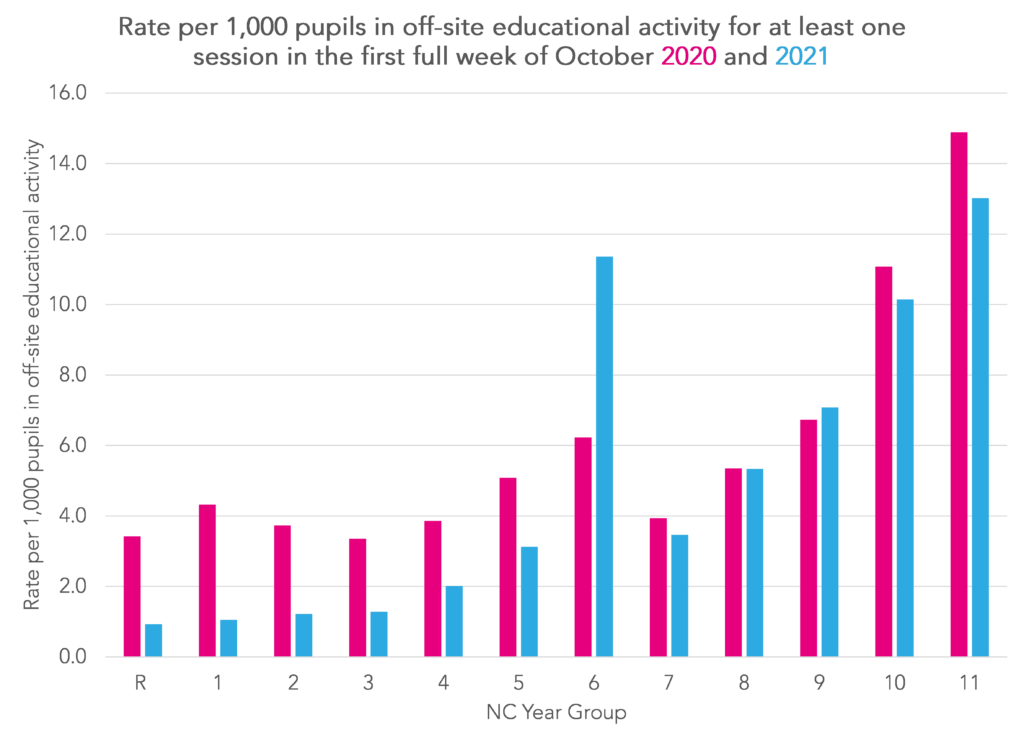
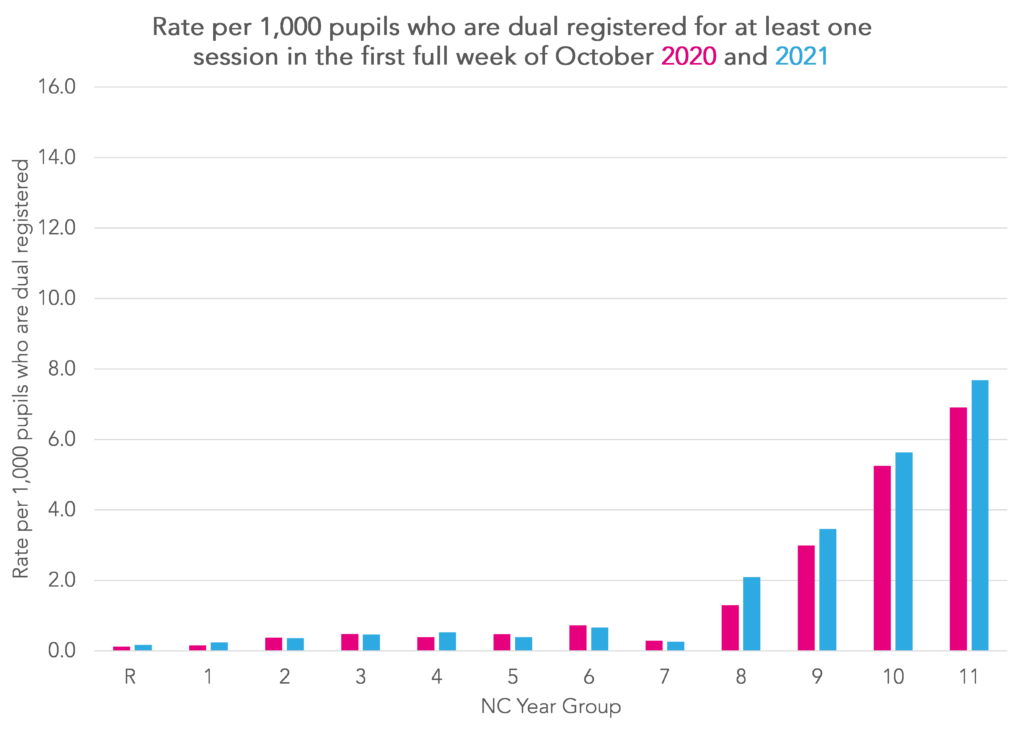

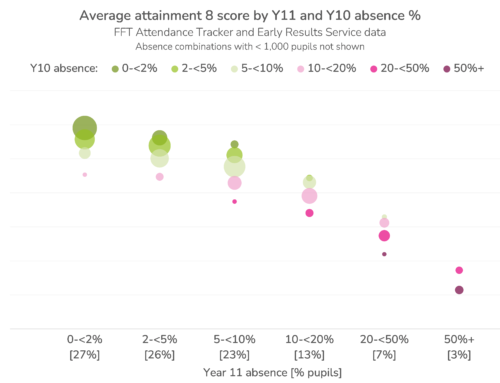
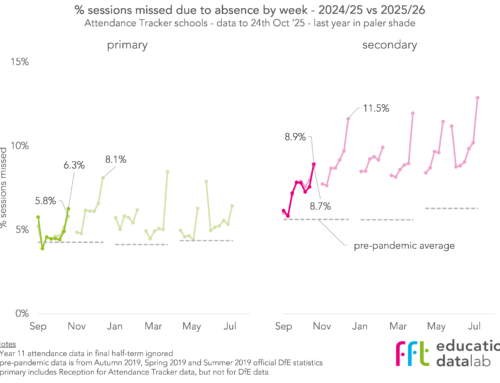
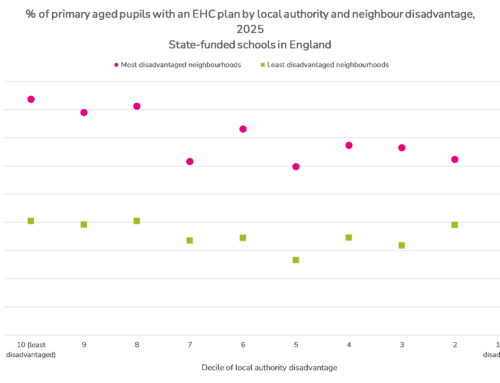

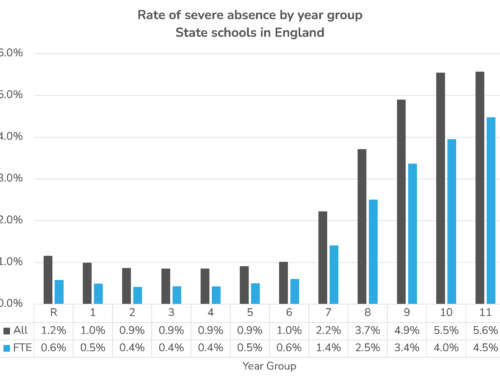
Thank you really useful – can I ask for a comparator of the exclusion data to 2019 the last year schooling was ‘normal pre covid’ and also how many of those exclusions were for children in care ? Is that possible from the data ?
Hi Caroline. Thank you. It’s something I’d also like to know. Unfortunately we only started collecting data from schools from September 2020. We’ll probably be able to do something at the end of term as there is national data for sessions missed due to exclusion for the whole of the Autumn term 2019 (but not the specific week I’ve used here).
thats great Dave thank you – do we know how many of the exclusions are for children who are CLA?
No CLA isn’t included in the data we collect from schools. We’re generally reliant on using National Pupil Database for the analysis of CLA pupils (or CIN) and there are massive lags in that data being made available for research. We’re still working on analysis of absence in Autumn 2020 for vulnerable groups.
Hi,
Could you please confirm, the graphs represent rates per 1000 pupils on roll. When talking ‘on roll’, is this 1000 per year group or 1000 for total school roll?
This is great insight by the way. Thank you for your efforts with this.
Hi Andy. Thanks a lot! It’s per year group. So 10 in every 1,000 Year 10 pupils educated off-site in 2021 in the first chart, for example.